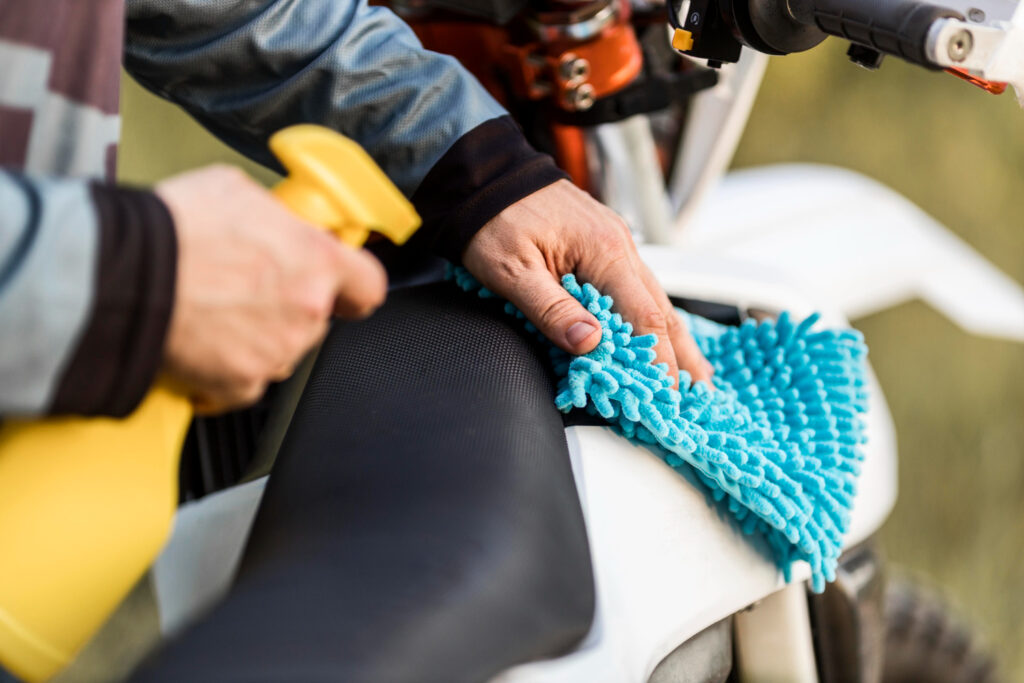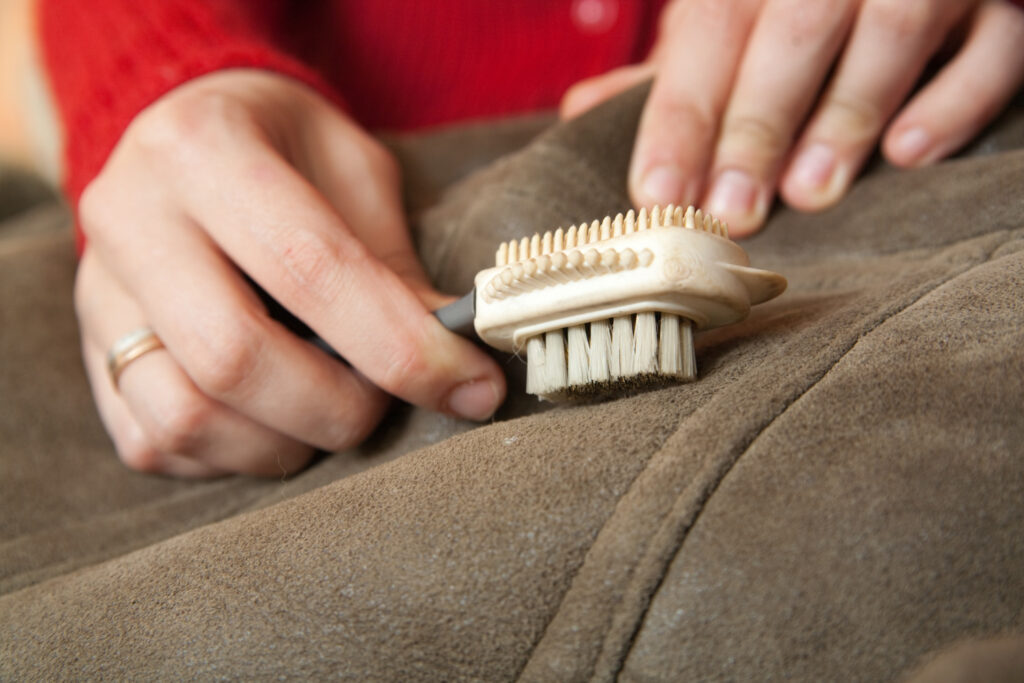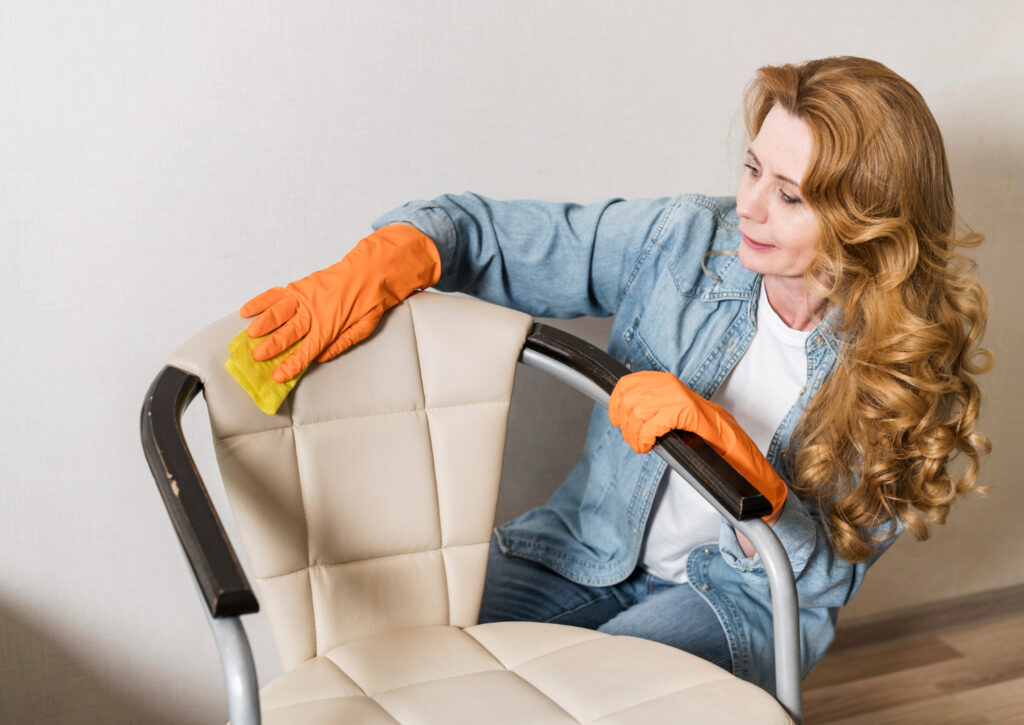Leather is a durable and stylish material, but it requires proper care to maintain its appearance and longevity. Here is a comprehensive guide on how to clean leather effectively:
Regular Maintenance
Regular maintenance is key to preserving the integrity of the leather. Here are some essential tips:
Dusting and Vacuuming
- Use a soft, dry cloth or vacuum with a brush attachment to remove surface dust and debris.
- Pay attention to crevices and seams where dirt tends to accumulate.
Conditioning
- Apply a high-quality leather conditioner every 6-12 months to keep the leather soft and supple.
- Choose a conditioner specifically formulated for the type of leather you’re treating.
Avoiding Direct Sunlight
- Prolonged exposure to sunlight can cause the leather to fade and deteriorate.
- Position leather furniture away from direct sunlight or use curtains and blinds to block UV rays.
Choosing a Cleaning Solution
There are several natural and gentle options for cleaning leather:
Vinegar Solution: Mix equal parts white vinegar and distilled water in a bowl. Dip a clean cloth into the solution and gently wipe down the leather.
Oil-Based Cleaner: Mix 2 parts natural oil (such as coconut, olive, or walnut oil) with 1 part lemon juice or water. Apply the mixture to the leather with a cloth, and buff it dry.
Essential Oils: Add 10-15 drops of essential oils like lemon or lavender to a microfiber cloth and gently massage it into the leather.
Mild Soap Solution: Mix a few drops of baby soap or natural detergent in a quart of warm water. Use this as a leather conditioner to clean and prevent stains.
Avoid using harsh cleaners like ammonia, bleach, or acetone-based products, as they can damage the leather’s finish.
Applying the Cleaning Solution
- Start by vacuuming or wiping down the leather surface to remove any loose dirt or debris.
- Dip a clean, damp (not saturated) cloth into your chosen cleaning solution.
- Gently wipe down the leather, being careful not to oversaturate it. Rinse the cloth frequently to avoid spreading dirt.
- Once cleaned, use a leather conditioner to keep the material supple and protected. Apply the conditioner in small, circular motions using a brush, sponge, or microfiber cloth.

Stain Removing
Here are the key steps to remove various types of stains from leather:
Water Stains
- Blot the excess moisture using a clean, absorbent cloth.
- Allow the leather to air dry naturally, away from direct heat sources.
Oil/Grease Stains
- Sprinkle cornstarch or baking soda on the affected area and let it sit for a few hours to absorb the oil.
- Brush off the powder and wipe gently with a clean cloth.
Ink Stains
- Dab the stain with a cotton swab dipped in rubbing alcohol.
- If the stain remains, apply a non-gel, oil-free cuticle remover and let it sit overnight.
- Use an ink removal product formulated for leather if the first two steps don’t work.
Dark Stains
- Make a paste with equal parts lemon juice and cream of tartar.
- Apply the paste to the stain, let it sit for 10 minutes, then wipe away with a damp cloth.
General Tips
- Always test any cleaning solution on a small, inconspicuous area first.
- Avoid using harsh chemicals like bleach or ammonia, as they can damage the leather.
- Clean the entire area with a leather cleaner after removing the stain, then apply a leather conditioner.
- Act quickly when a spill occurs and treat the stain appropriately to prevent it from setting in.
By following these steps, you can effectively remove a variety of stains from your leather furniture, clothing, and accessories without causing further damage.
Natural ways to remove scratches from leather
Here are some natural ways to remove scratches from leather:
Vinegar and Shoe Polish Solution
- Clean the leather surface with a leather cleaner.
- Dab the scratched areas with a cloth soaked in white vinegar to make the scratches swell up.
- Once dry, apply a colorless shoe polish to the affected area and gently rub it in until it blends.
- If the scratches are still visible, apply olive oil to the area using a soft cloth in a circular motion.
Leather Conditioner or Oil
- Dip a soft cloth in a leather conditioner or oil.
- Gently rub the conditioner or oil into the scratched area in a circular motion, starting from the affected spot and moving outward.
- Allow the leather to absorb the conditioner or oil for 10 minutes, then wipe off any excess.
Olive Oil
- Dab a clean, colorfast cloth into olive oil.
- Lightly rub the affected area in a circular motion, then feather the oil out to the non-affected areas.
- Allow the olive oil to dry for about 24 hours.
Leather Restoration Kit
For deep scratches, use a leather restoration kit that contains a leather strengthener, filler, and coloring product.
The key is to test any solution on a small, inconspicuous area first to ensure it doesn’t damage or discolor the leather. Avoid using harsh cleaners or products not specifically designed for leather.
Conditioning of Leather
Here are the key steps to effectively condition leather:
Steps to Condition Leather
- Prepare the leather item by removing any accessories, laces, or straps that could interfere with the conditioning process.
- Clean the leather thoroughly using a leather cleaner or a mild soap and water solution. This helps remove any dirt or debris before conditioning.
- Allow the leather to fully dry, ideally for 24 hours, before applying the conditioner.
- Do a spot test with the leather conditioner on a small, inconspicuous area to ensure it doesn’t discolor or damage the material.
- Apply a small amount of a high-quality leather conditioner, like Leather Honey Conditioner, using a soft cloth or pre-moistened wipes. Gently rub the conditioner into the leather in circular motions, covering the entire surface.
- Allow the conditioner to fully absorb into the leather, which may take 24 hours. Wipe away any excess residue with a clean cloth.
Homemade Leather Conditioners
The search results also provide some natural DIY leather conditioner recipes:
- Mix equal parts white vinegar and distilled water.
- Combine 2 parts natural oil (e.g. coconut, olive, walnut) with 1 part lemon juice or water.
- Melt beeswax and mix with linseed, flaxseed, or coconut oil, then add a few drops of lemon essential oil.
- Use a mild baby soap solution with a few drops of vinegar.
Regularly conditioning leather, whether with a commercial or homemade product, helps protect it from damage, maintain its appearance, and extend its lifespan.
Protecting Leather
Preventative measures can significantly extend the life of your leather items. Here’s how to protect them from common hazards:
Using Leather Protectors
- Apply a leather protector spray to create a barrier against spills and stains.
- Test the product on a small, inconspicuous area first to ensure compatibility with your leather.
Avoiding Harsh Chemicals
- Refrain from using harsh cleaning agents or solvents on leather, as they can strip away its natural oils and finish.
- Stick to mild, pH-balanced cleaners recommended for leather.
Proper Storage
- Store leather items in a cool, dry place away from direct heat sources and humidity.
- Use breathable covers or dust bags to protect them from dust and moisture.

For more home improvement ideas, read: Urban Oasis
Frequently Asked Questions (FAQs)
What is the best way to clean leather?
According to the search results, the best way to clean leather is to use a mild, water-based leather cleaner. Avoid harsh cleaners like ammonia, bleach, or acetone-based products, as they can damage the leather’s finish.
How do I remove stubborn stains from leather?
For stubborn stains like ink or grease, it’s crucial to act quickly. Use a gentle cleaning solution of mild soap and water, and blot the stain rather than rubbing it, as rubbing can spread the stain further. For particularly tough stains, consider consulting a professional leather cleaner.
Is it necessary to condition leather regularly?
Yes, regular conditioning is essential to keep leather soft, supple, and moisturized. Leather is prone to drying out over time, especially in dry climates or environments with low humidity. Applying a high-quality leather conditioner every 6-12 months helps replenish lost moisture and maintain its appearance.
How can I protect my leather items from fading?
To prevent leather from fading due to sunlight exposure, position furniture away from direct sunlight or use curtains and blinds to block UV rays. Additionally, consider applying a leather protector spray, which forms a barrier against UV damage and helps maintain the leather’s color and finish.
Conclusion
With proper care and maintenance, leather furniture and accessories can remain timeless pieces in your home decor collection. By following the expert tips outlined in this guide, you can ensure your leather items stay clean, protected, and looking their best for years to come.

